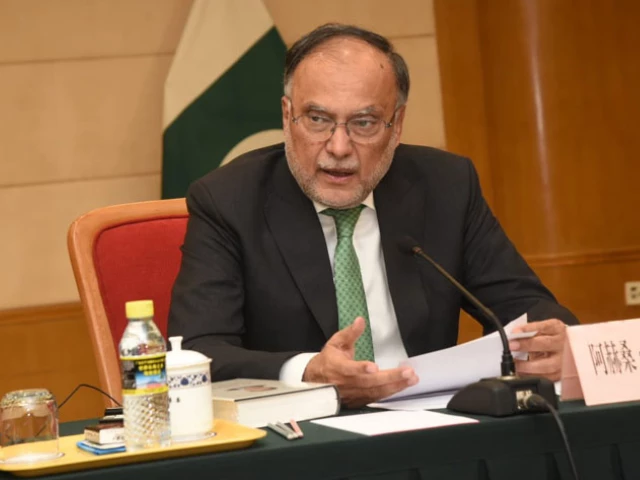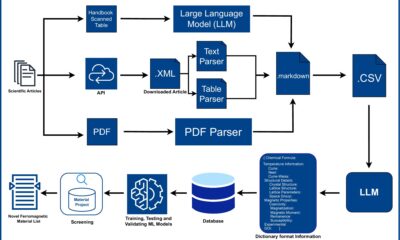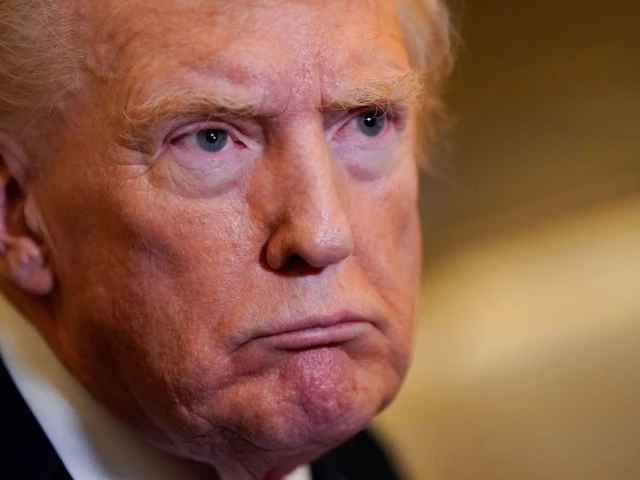Business
CDWP clears Rs79b projects | The Express Tribune

Ahsan Iqbal says Balochistan’s uplift, Pakistan Post’s automation key to govt’s inclusive growth agenda
ISLAMABAD:
The Central Development Working Party (CDWP), chaired by Minister for Planning, Development and Special Initiatives Ahsan Iqbal, approved seven development projects worth Rs34.66 billion and recommended two major schemes of Rs44.62 billion to the Executive Committee of the National Economic Council (ECNEC) for final approval.
In total, the CDWP cleared nine projects covering higher education, governance, health, physical planning, power, and information technology. The approvals reflect the government’s drive to fast-track development initiatives nationwide, according to an official statement issued on Saturday.
Among the projects approved, the “Establishment of University of Turbat (Phase-II)” costing Rs1.93 billion was sanctioned. The project includes new academic blocks, hostels, residences, internal roads, drainage, electrification, IT networking, furniture, and laboratory equipment to transform the institution into a modern higher education facility.
While approving the scheme, Iqbal reiterated that Balochistan’s economic and educational development remained a core priority of the Pakistan Muslim League-Nawaz (PML-N) government. He recalled that during previous tenures, several universities and sub-campuses had been established in remote areas of the province, along with financial support to BUITEMS and Sardar Bahadur Khan Women’s University.
He noted that 5,000 scholarships had earlier been awarded to students from Balochistan and ex-FATA, and the programme’s second phase now included overseas scholarships for legal education. The minister urged university leadership to focus on intellectual growth, civic values, and exposure for students through study tours to major cities. The CDWP also restored the previously reduced allocation for laboratory equipment, enhanced the library budget, and directed installation of solar energy systems. Members appreciated these measures.
Another major project approved was the revised “Automation of Pakistan Post” worth Rs6.64 billion, to be financed through the Export-Import Bank of Korea (KExim). The project will automate 2,761 post offices, introduce a Core Banking System, strengthen ICT infrastructure, and modernise remittances, insurance, and logistics services.
Officials briefed that the project, initially approved in 2017 at Rs2.2 billion, was delayed due to policy discontinuity, raising costs to Rs6.5 billion and causing Pakistan Post to lose around 65% of its market share to digital competitors. Approving the revival, the minister said automation was now “unavoidable,” adding that it would enable Pakistan Post to regain its share in e-commerce and improve public service delivery.
Other projects approved included: Establishment of Daanish School at Chitral, K-P (Rs3.32 billion); Capacity Enhancement of Federal Entities (Rs5.43 billion); Stroke and Critical Care Facilities at PIMS (Rs7.22 billion); Punjab Intermediate Cities Improvement Programme (Rs4.83 billion); and Rehabilitation of Hydropower Stations (Rs5.27 billion).
Business
Inside Ford’s new world headquarters: Scratch kitchens, rotisserie chickens and design secrets

The exterior of the main entrance of Ford Motor’s new world headquarters in Dearborn, Michigan.
Ford
DEARBORN, Mich. — Ford Motor is swapping its 1950s “Glass House” headquarters for a new, modern industrial facility to promote collaboration and better appease thousands of employees who have returned to offices in recent years after remote working.
The new 2.1-million-square-foot facility in Dearborn, Michigan, is ceremoniously opening Sunday, although construction is expected to continue into 2027.
It replaces a 12-story, rectangular-shaped headquarters roughly three miles away in the city that is expected to be demolished. The new building marks Ford’s sixth headquarters since its founding in 1903.
Currently nicknamed “The Hub,” the new headquarters will consolidate thousands of employees and several prior locations under one — albeit very large — roof. It is eventually expected to be home to up to 4,000 executives and employees involved with daily business operations, design and product development.
Ford Motor’s new world headquarters in Dearborn, Michigan, will function as corporate offices as well as a design and product development center.
Ford
From an operational basis, the new headquarters is roughly split evenly between design and industrial operations. Design includes massive studios with hidden courtyards and a large showroom. The other half is set to be used for general business operations such as executive offices and common work and meeting areas.
There are very few actual offices outside of those for top executives, according to the company. The idea is for employees to be able to work as they choose in different areas, or “neighborhoods,” depending on what they’re working on that day, officials said. Domain staking, where employees attempt to make a space their permanent workplace, will be discouraged, said Jennifer Kolstad, global design and brand director for Ford Land, the automaker’s property management group.
“It’s not just a building. This is a space that is a tool for our employees to be more productive, to be more collaborative, and really help deliver the Ford+ plan,” said Jim Dobleske, Ford Land chair and CEO, during a tour of the building.
The Ford+ plan was introduced by CEO Jim Farley as a turnaround and efficiency plan for the automaker in 2021.
A coffee bar in Ford Motor’s new world headquarters in Dearborn, Michigan.
Ford
As of the end of last year, Ford employed roughly 30,500 white-collar salaried workers in the U.S. The company continues to own or utilize other properties throughout the U.S., including large bases in Dearborn and surrounding areas.
Many salaried employees are expected in offices at least four days a week, as of earlier this year, after many of them had a more loose hybrid office-home schedule following the end of the pandemic.
“We’re inviting them back into a space that is a tool to help them do their best work. And that best work tends to come with collaboration with other teams,” Dobleske said.
Scratch kitchens
Some of that collaboration is expected to occur over food.
The new headquarters includes a 160,000-square-foot dining area with eight “kitchen concepts” that will feature rotating menus as well as take-home options such as pizza and $6 whole rotisserie chickens, decadent desserts and a juice bar complete with a herb garden.
A worker takes out a batch of rotisserie chickens inside Ford Motor’s new world headquarters on Nov. 10, 2025, in Dearborn, Michigan.
Michael Wayland / CNBC
“We have guests coming in from all over the world, so we wanted to make sure we have designed our menus to kind of play homage to that diversity,” said Grant Vella, executive chef for the new ]headquarters. “We wanted to do something different, push the boundary of business dining.”
Outside of the kitchens and dining areas, vegetation and outdoor spaces are meant to make for a more walkable-friendly campus compared with the automaker’s prior, largely street- and parking lot-locked facility.
“This headquarters is the cornerstone of our campus redevelopment, but there’s been a tremendous amount of work that we have done throughout the campus to really connect it and make it much more walkable for our employees,” Dobleske said, pointing to several facilities and areas, including a test track and 18-acre “Horsepower Park,” surrounding the building.
An herb garden inside the dining and kitchen area of Ford Motor’s new world headquarters on Nov. 10, 2025 in Dearborn, Michigan.
Michael Wayland / CNBC
Inside the building are six courtyards, including a dual-level one at the center of the company’s new design studios to allow designers to take products outside to view them outdoors in natural light. Those design courtyards are exclusive areas that can only be viewed by the surrounding, private studios.
Most of the four-story building features outside natural light from the exterior glass walls as well as skylights and other windowed areas.
Ford Motor’s new world headquarters in Dearborn, Michigan, which will function as corporate offices as well as a design and product development center.
Ford
Hidden designs
In addition to making a more walkable exterior campus, Ford wants employees to use purposefully designed stairs rather than elevators and escalators that are the primary modes of transportation in its most-recent 12-story headquarters.
Craig Dykers, founding partner of Norwegian architectural firm Snøhetta that worked on the building, said each staircase in the building, especially in its 14 different arrival areas, are prominent and meant to be inviting to use.
“Obviously people don’t naturally want to climb a stair, so you have to design it very carefully so that people feel good about using the stair,” he said. “Part of the trick is that as you go up one flight, you don’t necessarily see the next flight, so it’s kind of a journey.”
Stairs inside the main lobby of the building are extremely wide and feature seating areas alongside the actual low-rise stairs. There’s also a coffee bar on a large landing above the main lobby.
Ford Bronco parts painted white in the American Road Lobby of the automaker’s new world headquarters in Dearborn, Michigan.
Ford
The coffee bar overlooks a white artwork that features vehicle parts — one of many prominent pieces of art Ford purchased or has curated for the new facility. Others are photos or drawings of vehicles, while some are simply non-automotive artistic pieces.
Inside the company’s design operations are large studios with advanced clay milling machines, a spacious showroom that will operate as a modern design dome and a 64-foot screen showing virtual reviews and testing.
What employees will not see much of is the company’s logo, the well-known blue oval surrounding the “Ford” name. There will be a massive Ford blue oval logo on the outside of the building but not on its interior. Unless you look closely.
On some exterior glass walls, such as the company’s design operations, there’s a glass pattern that features the ovals accompanied by hidden numbers that represent Ford patents.
Ford’s signature blue oval design can be seen in glass on the outside of its new world headquarters, in addition to numbers representing patents held by the company.
Ford
Ford declined to discuss the capital spent to build its new headquarters and design center, which was part of a previously announced $1 billion campus transformation that began under former CEO Jim Hackett, who previously led furniture company Steelcase.
Here’s a look inside the new world headquarters:
Workers prepare to raise a large Ford Motor blue oval onto the company’s new headquarters on Nov. 10, 2025 in Dearborn, Michigan.
Michael Wayland / CNBC
Artwork made of vehicle parts hangs in the main lobby of Ford Motor’s new world headquarters in Dearborn, Michigan.
Michael Wayland / CNBC
Ford is trying to make coming into the office more enticing with scratch kitchens, more outdoor space and places to collaborate at its new world headquarters in Dearborn, Michigan.
Michael Wayland / CNBC
A collaborative work space inside Ford Motor’s new headquarters in Dearborn, Michigan.
Michael Wayland / CNBC
Ford’s new headquarters includes a 160,000-square-foot dining area with eight “kitchen concepts” that will feature rotating menus as well as take-home options such as pizza and $6 whole rotisserie chickens, decadent desserts and a juice bar complete with a herb garden.
Michael Wayland / CNBC
Ford’s new headquarters includes a 160,000-square-foot dining area with eight “kitchen concepts” that will feature rotating menus as well as take-home options such as pizza and $6 whole rotisserie chickens, decadent desserts and a juice bar complete with a herb garden.
Michael Wayland / CNBC
Ford’s new headquarters includes a 160,000-square-foot dining area with eight “kitchen concepts” that will feature rotating menus as well as take-home options such as pizza and $6 whole rotisserie chickens, decadent desserts and a juice bar complete with a herb garden.
Michael Wayland / CNBC
A large courtyard near the kitchen and dining inside Ford Motor’s new world headquarters remains under construction on Nov. 10, 2025 in Dearborn, Michigan.
Michael Wayland / CNBC
Business
Money and wellbeing roadshows for Northamptonshire residents

Residents are to be offered advice on coping with the challenges of winter through a series of money and wellbeing roadshows.
Organised by West Northamptonshire Council, the events will bring together organisations to provide practical help, from home energy efficiency to debt advice – and mental health support.
The events are part of the authority’s wider money and wellbeing support programme, giving residents the opportunity to get tailored advice in a welcoming and inclusive space.
Laura Couse, Reform UK councillor and cabinet member for adult care and public health, said: “It is important that you know that you do not have to face these struggles alone.”
Run in partnerships with libraries, community centres and charities, the events aim to offer free advice and support to help people stay well and manage their finances during the colder months.
The roadshows will be held in Kingsthorpe in Northampton, Daventry, Towcester and Northampton between 20 November and 20 February 2026.
Each will have a different focus, including older people and home energy support, advice for families, and supporting families with pre-school children.
Couse acknowledged winter could be a “difficult time” for people.
“As the days get colder and darker, the pressures of everyday life, especially rising energy costs and worries about money or health, can feel overwhelming, but there is help available,” she said.
“These roadshows are not just about advice but also providing connection within our communities.
“Whether you’re worried about heating your home, managing your finances, or just need someone to talk to, these events are here for you.”
Business
India’s retail sector: Market to hit $1 trillion by 2030; digital and D2C formats set to reshape traditional shopping – The Times of India

India’s consumption landscape is gearing up for a major shift over the coming decade, with the country’s retail market expected to reach $1 trillion by 2030. A new report by venture capital firm Fireside Ventures says this surge will be fuelled by rising disposable incomes, faster digital adoption and the growth of a large aspirational consumer class.Fireside argues that the change is not just in size but in the very structure of how Indians shop. The firm notes that retail channels are seeing their “most dramatic reconfiguration yet.” According to the report, general trade—which made up over 90 per cent of retail in 2014—is projected to drop to around 70 per cent by 2030, reported news agency ANI. At the same time, modern trade, e-commerce, quick commerce and direct-to-consumer (D2C) brands are expected to accelerate sharply. D2C and quick commerce alone may account for up to 5 per cent of the total market within the decade.With shoppers increasingly embracing digital-first formats, branded retail is forecast to double and reach nearly $730 billion, which would represent almost half of all retail spending. Fireside highlights that new-age, digital-native brands are currently scaling two to three times faster than conventional companies, helped by agile distribution, data-driven product development and more personalised customer engagement.The analysis outlines several emerging consumer segments. The firm notes, “Map your audiences, and you’ll see the opportunity take the shape of many substantial markets, whether India I, the 15 per cent population driving 35 per cent of retail and 60 per cent of branded purchases; or Bharat, the larger, fast-digitising 85 per cent, hungry for new brands and experiences,” as per ANI.By 2030, India is expected to have 1.1 billion internet users and over 400 million online shoppers. Fireside describes this as the “flattest consumption opportunity” India has ever witnessed.The firm concludes that India’s next hundred iconic consumer brands will be built by founders who blend cultural insight with digital fluency—creating niche, rooted and experimental labels that resonate with a confident, modern and increasingly regional Indian shopper.
-

 Entertainment1 week ago
Entertainment1 week agoChina unveils£5.4 bn Fujian, its most advanced aircraft carrier yet
-

 Tech6 days ago
Tech6 days agoFrom waste to asset: Turning ethanol production CO₂ into jet fuel
-

 Politics1 week ago
Politics1 week agoIDF lawyers warned of possible Gaza war crimes: US intel findings
-

 Entertainment1 week ago
Entertainment1 week agoRobert Pattinson jokes about competing with Gen Z
-

 Sports1 week ago
Sports1 week agoIsraeli cycling team loses top sponsor despite honoring request to remove country from name
-

 Entertainment1 week ago
Entertainment1 week agoAlex Cooper apologizes to Taylor Swift for bizarre admission
-

 Tech1 week ago
Tech1 week agoMagnetic materials discovered by AI could reduce rare earth dependence
-
Sports1 week ago
College football winners and losers: The catch of the year saves Indiana







1736990282-0/image-(1)1736990282-0-640x480.webp)



